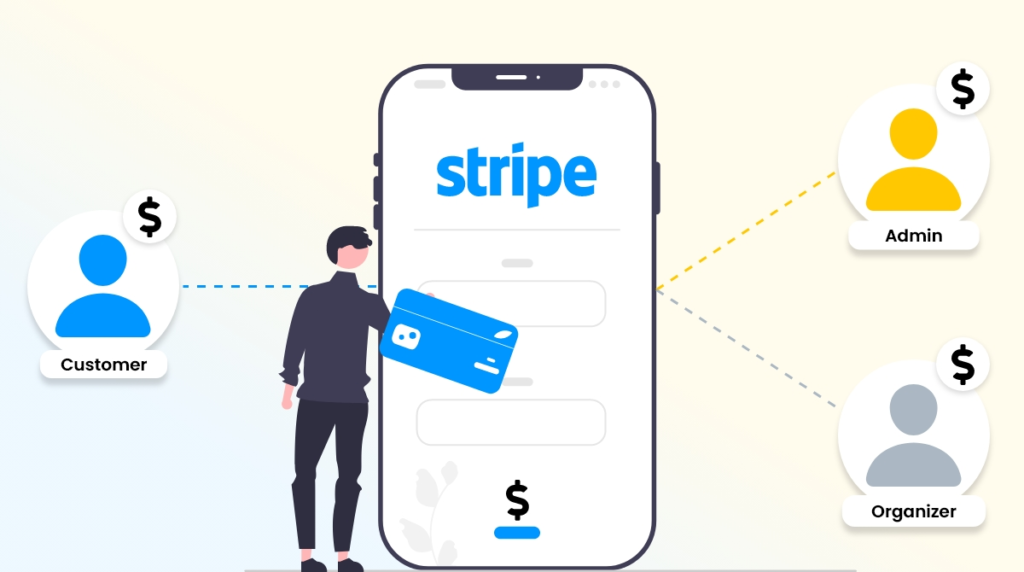AUTHOR : SELENA GIL
DATE : 11/12/2023
Introduction
In our rapidly evolving digital world, payment systems play a pivotal role in facilitating financial transactions. Among these systems[1], Stripe stands out as a leading platform, revolutionizing the way businesses and individuals manage payments online[2].
Understanding Stripe
History and Background
Founded in 2010 by Irish entrepreneurs Patrick and John Collison, Stripe emerged with a vision to simplify online transactions. Over the years, it has evolved into a versatile payment gateway, catering to diverse needs across industries globally.
Stripe’s Key Features
Stripe’s appeal lies in its Easy-to-use interface, robust security measures, and seamless integration options. Its Resilience allows businesses of all sizes to leverage its services, from startups to Transnational[3] corporations.
How Stripe Works
Registration and Account Setup
Getting started with Stripe involves a straightforward registration process. Users create an account, providing necessary business details[4], after which they gain access to a dashboard equipped with a suite of tools for managing transactions[5].
Integration and APIs
One of Stripe’s strengths is its ability to integrate with various platforms and applications through APIs (Application Programming Interfaces). This integration capability simplifies the incorporation of payment functions into websites and mobile apps.
Benefits of Using Stripe

Security Measures
Security remains a top priority for any payment system. Stripe ensures data encryption and compliance with industry standards, instilling confidence in both businesses and customers.
Flexibility and Customization
Stripe’s flexibility allows customization to suit specific business needs. It supports multiple payment methods and currencies, catering to a global audience.
Stripe’s Pricing Model
Transaction Fees
Stripe operates on a transparent pricing model, charging a standard fee per transaction. This simplicity appeals to businesses seeking clarity in their financial operations.
Additional Services and Costs
Beyond transaction fees, Stripe offers additional services such as subscription management and invoicing, each with its associated costs.
Comparison with Other Payment Systems
Stripe vs. PayPal
While both are popular, Stripe distinguishes itself with a developer-friendly approach and simpler fee structures, making it a preferred choice for many businesses.
Stripe vs. Square
Stripe focuses on online transactions, while Square also offers physical point-of-sale solutions. Each caters to distinct market segments, with different strengths.
Case Studies of Successful Implementations
E-commerce Platforms
Numerous e-commerce giants leverage Stripe’s services for seamless checkout experiences, contributing to increased sales and customer satisfaction.
Subscription-Based Services
Subscription-based businesses benefit from Stripe’s recurring payment features, enabling them to manage subscriptions effortlessly.
Challenges and Limitations
Technical Issues
While robust, Stripe isn’t immune to occasional technical glitches, impacting payment processes temporarily.
Geographical Restrictions
Availability varies by region, posing limitations for businesses operating in areas where Stripe isn’t yet accessible.
Future Trends in Payment Systems
Innovations in Payment Technology
Advancements like AI-driven fraud detection and Payment System Stripe biometric authentication[1] are likely to shape the future of payment systems.
Expansion of Digital Payment Methods
With the rise of cryptocurrencies and digital wallets, the landscape of payment systems is continually evolving.
Expansion and Adaptation
Global Accessibility

Stripe’s continual expansion aims to make its services accessible worldwide. While geographical restrictions exist, Stripe has been progressively widening its reach, allowing businesses in various countries to leverage its services for online transactions.
Integration Capabilities
One of Stripe’s defining features is its ease of integration with diverse platforms and applications. Its APIs empower developers to seamlessly incorporate payment functionalities into websites, mobile apps, and even custom software solutions, enhancing user experience[2] across digital platforms.
User Experience and Customization
Seamless Checkout Processes
Stripe prioritizes a smooth and hassle-free checkout experience for customers. Its user-friendly[3] interface streamlines payment processes, reducing friction points during transactions and improving conversion rates for businesses.
Customization Options
Businesses can tailor Stripe’s functionalities to suit their specific needs. From defining payment methods to customizing invoicing and subscription management[4], Stripe offers a range of options for businesses seeking flexibility in their payment systems.
Security Measures and Trust
Stringent Security Protocols
Stripe places utmost importance on data security. Employing encryption techniques and complying with industry standards ensures that sensitive information remains safeguarded throughout transactions, building trust among users.
Trust and Reliability
The reliability of Stripe’s services contributes significantly[5] to its trustworthiness in the industry. Its consistent performance, coupled with transparent fee structures, instills confidence in businesses relying on its payment processing capabilities.
Continuous Innovation
Embracing Technological Advancements
Stripe remains at the forefront of innovation in the payment industry. Constantly adapting to technological advancements, it seeks to offer cutting-edge solutions, paving the way for more efficient and secure payment systems.
Customer-Centric Approach

Stripe’s focus on customer feedback and evolving market needs drives its innovation. Regular updates and feature enhancements reflect its commitment to providing solutions that cater to the dynamic requirements of businesses and consumers.
Would you like more information on any specific area related to Stripe, such as its user interface, integration options, security measures, or future developments in the payment industry?
Conclusion
Stripe’s innovation and adaptability have transformed the way businesses manage online payments. Its user-friendly interface, coupled with robust security measures, positions it as a frontrunner in the ever-expanding realm of payment systems.
FAQs
- Is Stripe suitable for small businesses?
Yes, Stripe caters to businesses of all sizes, offering scalable solutions adaptable to small and large enterprises alike. - What distinguishes Stripe from its competitors?
Stripe stands out for its developer-friendly approach, transparent pricing, and seamless integration options. - Does Stripe support international transactions?
Absolutely, Stripe supports multiple currencies and payment methods, facilitating global transactions. - Are there any downsides to using Stripe?
While rare, technical issues and geographical limitations can occasionally pose challenges for users. - Can Stripe be integrated into mobile applications?
Yes, Stripe offers APIs that enable easy integration into both websites and mobile apps.





